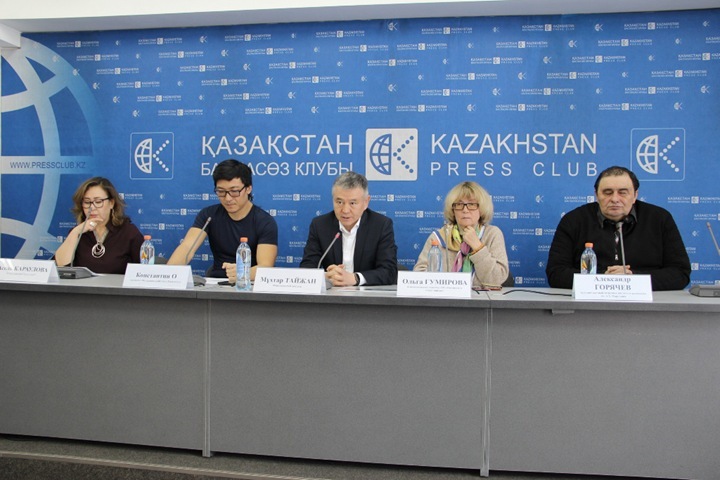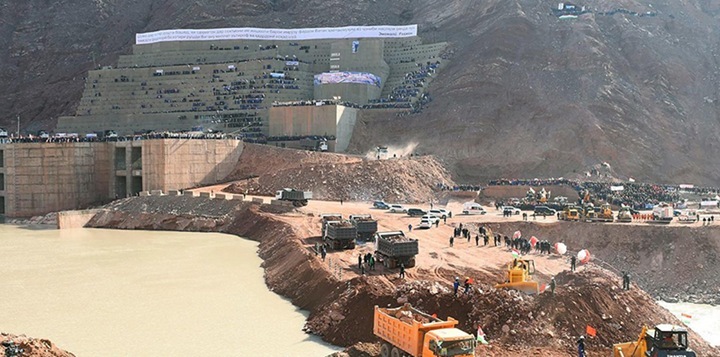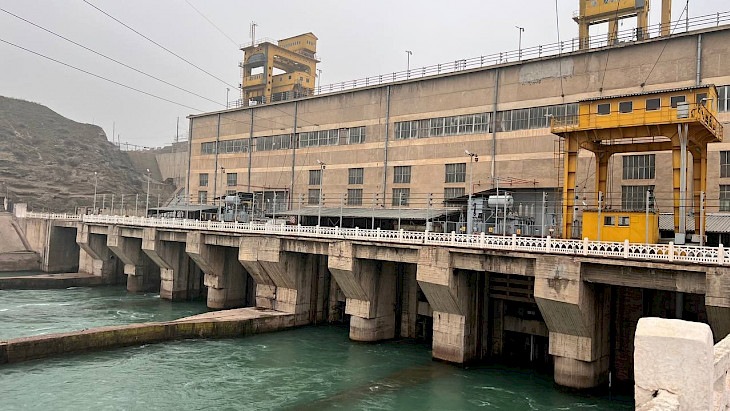Mounds and petroglyphs will remain under water: what threatens the HPP on the Koksu river
In the Kerbulak district of the Zhetysu region, disputes erupt over the construction of a cascade of seven hydroelectric power stations on the Koksu River. The project, which involves the installation of a hydroelectric power station with a total capacity of 150 MW, is of concern to scientists, athletes and members of the public. They do not share optimism about the future economic and energy benefits of the project, as they said during a press conference at the Kazakhstan Press Club. It is expected that the new hydraulic structure will not only change the ecosystem of the region, but also affect its cultural heritage.

A threat to cultural heritage?
According to scientists and public activists, the construction of hydroelectric power plants entails serious risks, including man-made and environmental disasters. It can lead to irreversible losses of cultural and historical heritage of world importance. In addition, the region may lose the opportunity to hold international sporting events, which, in turn, will affect its tourist attractiveness.
Candidate of Economic Sciences Taizhan Mukhtar noted that, although the need for electricity is obvious, it is important that the requirements of the law on the preservation of historical and cultural heritage be observed when implementing such large projects. According to this law, before starting construction, an expert examination should be carried out, which will assess which monuments may be lost.
“And that’s what will remain under the water? These are mounds, these are petroglyphs, because in this gorge, according to scientists, in particular Alexander Goryachev, this is the largest tract, which has the largest number of petroglyphs. That is, we cannot afford to lose our historical roots in order to search for or find an energy source. There is no present or future without roots. When such dams are built, the water level inevitably rises. And everything is flooded around within the perimeter of this GRES. According to the law on the preservation of historical and cultural heritage, before this construction, an examination should always be carried out, what are we losing there. We are just worried that as a result of such construction we will lose our heritage,” said Tayzhan Mukhtar.
According to Olga Gumirova, executive director of the Petroglyph Hunters Foundation, it is planned to build from seven to ten hydroelectric power stations on a 60 km long site, which will be located at intervals of only 6-9 km. Each of the stations is built by different organizations, and they are scattered in three different areas. At the same time, the local authorities, according to her, were not aware that the construction was being carried out on such a large scale. The category of construction of these facilities is of particular concern to members of the public. Most of them belong to the third category, which does not require public hearings and involves less rigorous examinations. However, some hydroelectric power plants may be transferred to the second category during operation, which will greatly change the requirements for their assessment and safety.
“The Koksu River, firstly, flows through a fertile valley. There are actually elite agricultural lands there. During the construction of hydroelectric power stations, agricultural land will naturally be withdrawn from circulation. Plus, if you add a cable through which electricity will be discharged, this is also a land diversion. Secondly, it is a long-standing tourist place. A huge number of people have already created a tourist infrastructure. Tourists, rafters, rafters come there. People come there to pick mushrooms and berries. There are just various tourists traveling there. That is, guest houses, hotels, there are certified routes. And, of course, with such a large number of hydroelectric power stations, this whole territory loses its attractiveness in the season when fishermen with their families and not only from Taldykorgan and surrounding villages go to this river,” Olga Gumirova said.
Another significant aspect that Olga Gumirova indicated was the lack of a full–fledged mudflow examination. The Koksu River is prone to mudflows, as evidenced by historical data. She recalled that in 1956 a powerful mudslide completely destroyed the village of Budenoe, caused numerous casualties, and flooding of houses was recorded in the village of Kirovskoye. Despite these facts, construction companies, as the speaker notes, rely on a sample of data in their reports only since 1959.
“There is another important point that we would like to draw your attention to. Once again, our regional leaders and construction companies step on this rake when they do not pay attention or make poor-quality archaeological expertise. In particular, when we arrived at Rudnichny HPP-1, it turned out that the management of the construction company and the akimat missed such a moment that a construction permit was issued without an archaeological examination,” the speaker summed up.
Alexander Goryachev, a leading researcher at the A.H. Margulan Institute of Archaeology, noted that the construction of a HPP on Koksu could cause serious damage to the historical and cultural heritage of the region. According to him, the Karatai valley of the Koksu River is one of the oldest cultural centers of Kazakhstan. From the earliest stages of history, this region played an important role in the development of civilization, and until the middle of the XIX century Koksu was the southern boundary of the historical Zhetysu. The river valley served as a key route for trade caravans and migration flows, which led to the formation of many historical and cultural monuments. Of particular value is the Eshkiolmes ridge, full of archaeological sites. Its study began relatively recently — in the early 1980s. However, studies have shown that this area contains more than 200 burial mounds of the Early Iron Age, as well as hundreds of monuments of the Bronze Age. In the gorges there are settlements dating back to antiquity, the Middle Ages and Modern times.
“There are also several cemeteries of modern times on the mountain passes, that is, representatives of Kazakh clans and tribes. The ridge itself is a huge, unique natural and historical complex. Even if it is being investigated, it is absolutely impossible to touch it, since most of the archaeological sites are immovable, it is impossible to take them from there, and most of them are rock carvings, of which, according to our preliminary estimates, there are about 25 thousand. This is the largest collection of ancient rock carvings in Kazakhstan,” Alexander Goryachev said.
According to the President of the Rafting Federation of Kazakhstan Konstantin O, the Koksu River has unique characteristics that attract athletes from all over Kazakhstan and other countries.
“After the construction of the hydroelectric power station, the championships of the republican and even more international level immediately disappear. They either become completely impossible or lose their potential. The construction of the hydroelectric power station will damage the tourism industry, restricting access to the river and destroying its sports potential,” Konstantin O. noted.
According to him, the Federation calls for an open discussion of the project with the participation of the sports community, environmentalists and tourism specialists.
Arguments in favor of the project
Residents of the village expressed support for the construction of the HPP, considering it an important step towards the development of the region. In their opinion, any industrial construction contributes to progress by creating new jobs and improving living conditions.
One of the residents of the district noted that in the 1950s the village also started from scratch, but thanks to the discovery of a deposit, the construction of a mine, a processing plant and a truck depot, life here was in full swing. However, over time, the industry declined, people began to leave, and houses — even comfortable apartments — were empty. Today, the village needs an economic boost, and the construction of a hydroelectric power station, in her opinion, may become such a chance.
“In the 1950s of the last century, there was nothing in this village either. But they found a deposit, opened a mine, built a processing plant, built the same carpool. The village lived, developed, was built. There was a lot of population here. Gradually, all this began to fade away, and you can see for yourself what life in our village has come to. Half of the apartments, and even more than half, are closed. And comfortable apartments. Houses are abandoned, people are forced to leave our village because there are no jobs, no means of livelihood. I believe that the construction of the hydroelectric power station will give a new stage to the development and uplift of our village. Perhaps people will return here, perhaps those who come here to work will be interested in our area and will also live here. We have requirements for the builders of the hydroelectric power station so that all this is carried out according to all standards and does not harm the environment,” said a resident of the Kerbulak district.
She also expressed skepticism about the protest of representatives of the tourism industry, who, according to her, earn on imported tourists, but do not invest in the development of the village. At the same time, investors planning the construction of hydroelectric power stations promise to provide assistance in landscaping: repair of facilities, construction of roads and sites. Therefore, in her opinion, the project deserves support, as it brings real benefits to the local population.
According to the representative of the Department of Natural Resources and Environmental Management Kanat Daurenbekov, the project for the construction of the Mine HPP-1 and HPP-2 has passed all stages of environmental review and expertise.
“There is no question of violation of environmental legislation, as the project complies with the standards of atmospheric air protection, protection of surface and groundwater, as well as measures to prevent and minimize negative impact on the environment. According to the environmental conclusion, the envisaged environmental measures make it possible to reduce potential risks and conduct construction within the framework of the legislation of the Republic of Kazakhstan. As an expert in water management, I can say that the HPP project does not involve the construction of a dam and the complete blocking of the riverbed. The water will be taken from the riverbed,” explained Kanat Daurenbekov.
According to Aliya Karabalin, the project manager for the construction of the Mine HPP-1 and HPP-2, it is planned to create up to 500 thousand jobs during the construction period, and after the commissioning of the facility, about 50 people will be employed. Currently, about 60 local residents from nearby villages are already involved.
“We have a misunderstanding with the athletes. They do not want to enter into a dialogue with us in any way so that we can create even more favorable conditions for them. As it turned out, we infringed on their 208 meters of water surface. We are ready to extend it to them by 300-500 meters. We have met with the local population more than once, they fully support us,” said Aliy Karabalin.
Maria Galushko (inbusiness.kz )


